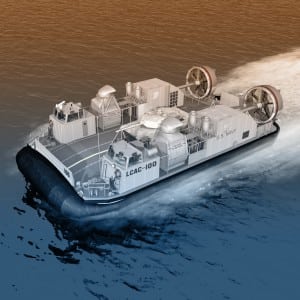
NATIONAL HARBOR, Md. -- Textron’s [TXT] Maritime and Land Systems’ Ship-to-Shore Connector (SSC) hovercraft started its first at-sea on-water testing, company officials told Defense Daily during the annual Sea Air Space Expo last week.The SSC is the next-generation Landing Craft Air Cushion (LCAC), improving over the legacy craft with more powerful engines, a fly-by-wire control system, increased payload, fuel efficiency, reduction in crew from four to three, a new propulsion and drive system, and fewer parts to simplify maintenance.It is…

 By
By 











